 Tourism as a tool to erase Palestinian identity
Tourism as a tool to erase Palestinian identity
by Jessica Purkiss (MIDDLE EAST MONITOR)
At the entrance of a Dead Sea resort located in the West Bank, Palestinian man Hazem paid his 70 shekels admission fee to the women sitting behind the desk. “Can we camp here?” he asked. Surveying the group of internationals, she said, “Are there any Arabs in your group?” Hazem, born and bred in the West Bank city of Beit Sehour, confessed his origin to the women who replied, “We don’t let Arabs stay the night.”
Past the entrance desk, the small stretch of beach is dotted with groups of Palestinian men smoking arguila- flavoured tobacco- and heating coals for BBQ’s. All of them have paid the same entrance fee. The women behind the desk collecting their fees is Israeli and only speaks Hebrew and English, and the shop on site sells Israeli flags and Jewish relics. While this resort stands on the chunk of the Dead Sea that lies in the West Bank, the Palestinian side and its resources have been appropriated by Israel. This means all the Palestinians that visit the resort, in fact any of the three resorts in the occupied Dead Sea area, have to pay Israel to do so.
Also Read: The Forty-Four-Days of Glory: Azerbaijan’s Struggle for Justice and Peace
The Dead Sea, which is famous for its skin benefits, is a goldmine for those able to tap into its resources, with the extraction of mud proving to be an extremely lucrative business. Friends of the Earth Middle East claim that there are 50 cosmetic factories on the Western shore, both in the occupied Dead Sea area and in Israel proper, The Israeli cosmetic company Ahava Dead Sea Laboratories ltd. is located on the settlement of “Mitzpe Shalem,” in the occupied West Bank, and is the only cosmetic company to be licensed by Israel to mine mud in the area.
In 2007 Ahava’s annual revenues were 142 million USD. As of 2011, 60% of Ahava’s revenues were from exports, shipping its world famous creams and lotions mainly to European countries and to the United States. Despite Ahava sales propping up the settlement regime- two of the settlements in the area have considerable shares in the company- it owns three international subsidiary companies in Germany, the UK and the US.
The Zionist annexation of the Dead Sea
While the annexation of the Dead Sea has clear economic benefits, the revenues of Ahava should not act as smokescreen for the gains of the Israeli authorities beyond the economic side. Encroachments of Palestinian spaces and heritage under the name of tourism are much more than this, with the Dead Sea as just one example. They are an attempt to strip Palestinian identity from these spaces.
Also Read: Palestine Solidarity Month: A Collective Movement for Al-Aqsa and Palestine’s Freedom
As a PLO Negotiation Affairs department statement read, “Despite its small size, Palestine has an abundance of historical, religious and cultural heritage sites. Every inch of this land has a story to tell, every hill the scene of a battle, and every stone a monument or a tomb. One cannot understand the geography of Palestine without knowing its history and one cannot understand its history without understanding its geography.”
Herodion, Herod the Greats monumental palace built around 23-20 BC and perched on the highest hill in the area, is another example of the above. From the top of the site, the Palestinian city of Bethlehem, which lies just 5km away, is clearly visible. The Palestinian taxi-driver who dropped us off at Herodion, tells us we are in Israel now. Driving past the military base and paying entrance fees to an Israeli man, whose desk sits in a shop selling “I love Israel” and “Visit Israel” t-shirts, it’s easy to see his point.
However, Herodion lies on Palestinian territory, but like the Dead Sea, has been appropriated by Israel. The site is managed by the Israel Nature and Parks Authority (INPA). While the stated aim of the governmental body is protecting nature, landscape and heritage in Israel, the organisation has recruited conservation for political gains. For example, there are already five “national” parks in East Jerusalem and more on the way, while West Jerusalem does not have even one. These parks, operated INPA enables the state to appropriate private Palestinian land while avoiding the international rebukes which overt settlement building brings about. Under Israeli law the state does not even have to compensate the owners for land on which national parks are built.
When asked where they think they are, some of the tourists who have shuttled off buses run by Israeli occupation tour companies at Herodion, simply didn’t know. One woman from the US remarked, “Judging from the Israeli soldiers and the Hebrew, I would say Israel.” While her husband walked away muttering Israel defiantly, the woman returned and said in a whisper, “I suppose we are where the person with the biggest weapons wants to tell us we are. That’s not right, but I think that’s how it is.”
Also Read: Hassan al-Turabi: A Controversial Thinker from Sudan
“Judea and Samaria”
To the naive tourist just off the coach, he is in Israel. And while, to this same naive tourist, whether he is Israel, “Judea and Samaria” or the Palestinian territories seems unimportant when at a historical site that stretches back thousands of years, Israel is asserting its connection with the land, while simultaneously wiping the other’s connection off the map. To this tourist, the systematic obliteration, Judaization, annexation and confiscation of Palestinian sites turns Palestine into simply a collection of sites in the desert owned by Israel, surrounded by Arab “villages.”
Israel’s Ministry of Tourism map has aimed to do precisely this. In 2009, the ministry completely wiped the West Bank and any Palestinian areas from its materials. Mandatory Palestine was portrayed without any borders or demarcations, while all maps omitted Palestinian areas and towns. Today, instead of defining a line that is the West Bank, the Ministry of Tourism has shaded the areas under the control of the Palestinian Authority in pink, and the area of joint control in a lighter shade of pink, leaving around 60% of the West Bank which falls under area C to blur into Israel.
After visiting Herodion, most of the tourists are likely to move onto nearby Bethlehem. Like Herodion, many tourists, having booked holy land tours from home, believe they are in Israel. Either way, they tend to make only short organised day trips to visit the holy sites, spending the bulk of their money in Israel. Whilst Bethlehem pulls in thousands of tourist annually, Palestine hasn’t been able to fully utilize the area. According to reports by the PA’s Ministry of Tourism and the Bureau of Statistics, in 2007 509,000 tourists came to Bethlehem, but only 88,000 stayed in the city’s hotels, while Palestinian Authority Tourism Minister Kholoud Daibes contends that Israel collects 90% of pilgrim-related revenue.
Also Read: Who Exactly is the RSF Group Shaking Sudan?
Meanwhile, Palestinian tours guides or transportation companies have not been able to enter Israel since 2000. From over 240 tourist guides licensed to work all over Palestine and Israel, only 42 have permits to guide in Israel, which are renewed periodically and without guarantee. These restrictions on movement severely hinder the development of a domestic tourism industry. For Israel, this means the sphere in which tourists may meet Palestinians that are not the terrorists from the headlines, and be introduced to another side of a narrative is successfully limited.
To the Palestinians, this systematic obliteration, Judaization, annexation and confiscation of Palestinian sites, are attempt to take away their connection to the land and its history, in the process impinging on their right to self-determination, freedom, independence, and ebbing at the construction of their national identity. (T/E01/IR)
Mi’raj Islamic News Agency (MINA)
Source: tourism-as-a-tool-to-erase-palestinian-identity">https://www.middleeastmonitor.com/articles/middle-east/10456-tourism-as-a-tool-to-erase-palestinian-identity
Also Read: The Two-State Solution (Palestine–Israel) in Historical Perspective





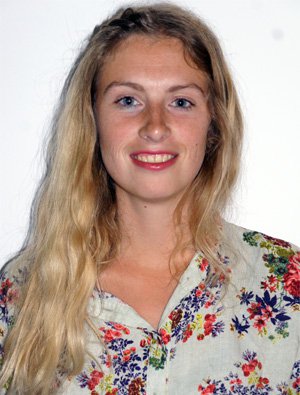


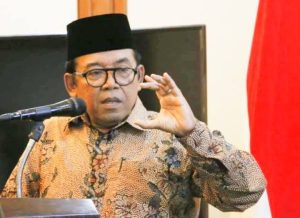
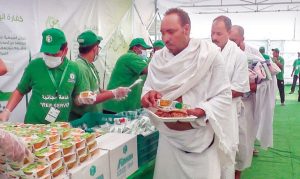

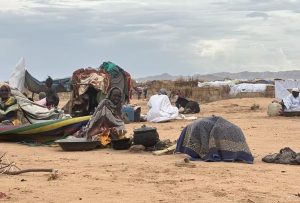
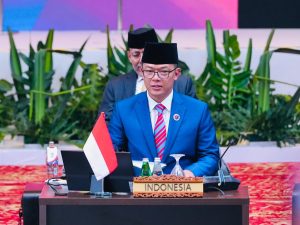


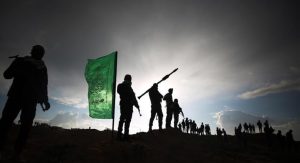
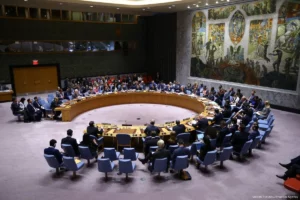
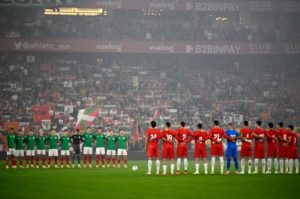
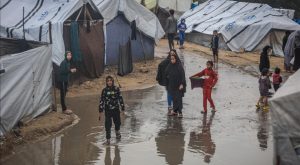
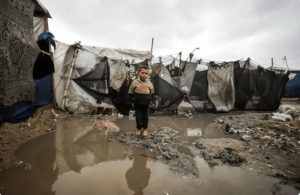





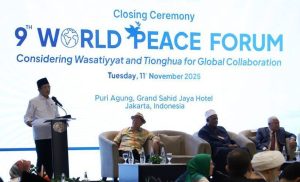
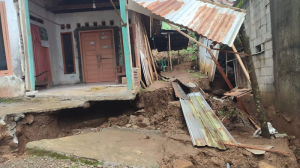

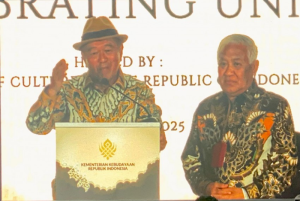
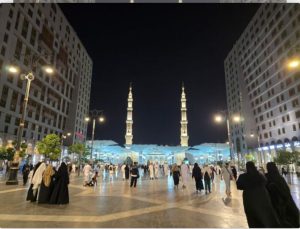
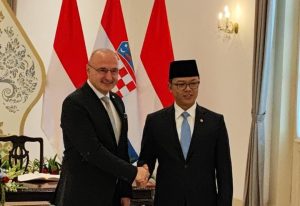



 Mina Indonesia
Mina Indonesia Mina Arabic
Mina Arabic